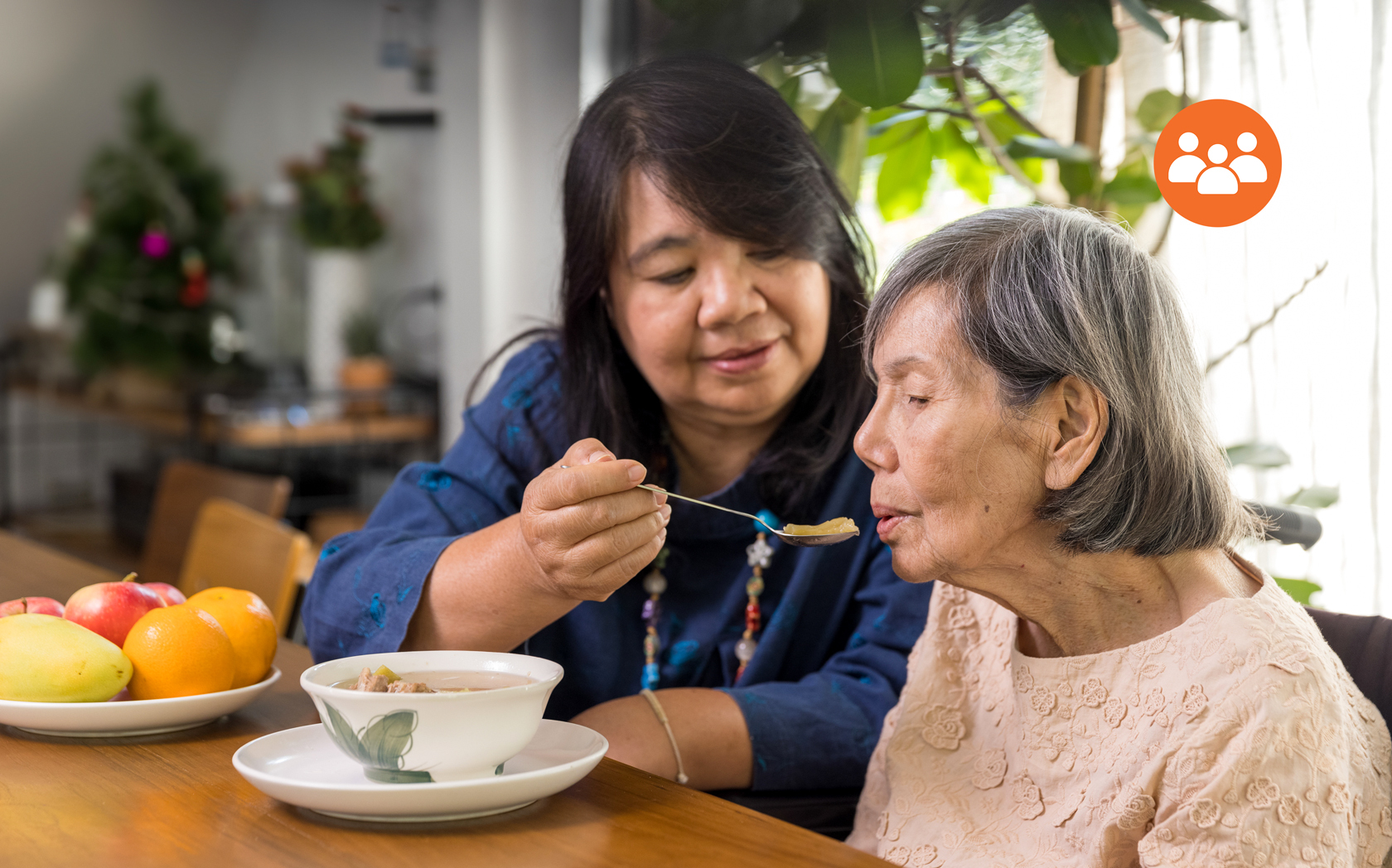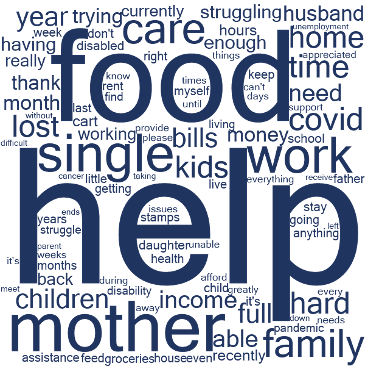
The Sacrifice of Caregiving

March 31, 2023
U.S. Hunger, through its Full Cart ® program, uniquely offers healthcare providers, plans, and municipalities the most comprehensive individual-level demographic and SDOH (Social Determinants of Health) data service available. Having extensively assessed the needs of food and nutritionally insecure Americans since the eve of the COVID pandemic, the organization’s CEO, Rick Whitted, says “It is too simple to just say that ‘food is medicine.’ Food is actually the tip of the spear when it comes to a host of socioeconomic and health disparities; and by building member trust, it allows the most accurate lens into health inequities and disparities.” The organization uses food as a social connector, then discretely and carefully listens to lived experiences that ripen the conditions for food and other socioeconomic insecurities. The impact of caregiving is one such lens that highlights the importance of knowing how to capture SDOH data and using the human story to prioritize actionable outcomes.
Caregiving comes in various forms- a parent caring for their children, a daughter caring for her elderly mother, a person caring for their disabled spouse- and has health implications for both the individual providing the care and the person receiving it. Within the U.S., approximately one-quarter of adults identify as a caregiver. Of the 145,785 Full Cart® applications received as of December 2022, approximately 6.9% (n = 10,054) of people who applied for food assistance identified themselves as “caregivers.” Through their stories, they shared that they serve their families as a “single mother,” “foster,” “grandmother,” and more. These individuals also shared that such responsibility comes with trade-offs and sacrifices. Approximately 41.2% (n = 5132) of caregivers who applied for food assistance through U.S. Hunger reported experiencing weekly food insecurity. An additional 26.9% (n = 3349) reported experiencing daily food shortages. Many individuals describe stretching or going without food to ensure that their families could eat. A single parent of two boys explained, “My income was reduced. With the cost of food, gas, and living expenses going up, it has been extremely difficult to keep food on the table.” Families and friends rely upon their caregivers to provide meals, transportation, emotional reassurance, and a variety of other supports to meet their needs and live healthier lives; thus, it is vital that we prioritize the health and well-being of those who provide care within our communities.
Economic factors (i.e., employment and income) are the most frequently reported factors that contribute to food insecurity, and caregivers often describe prioritizing the people they are caring for over themselves when it comes to putting food on the table. One Full Cart® recipient detailed the challenges she faces as the head of household while supporting her spouse who is experiencing kidney failure. She explained, “more often than not I’ll get myself food from the free fridge or go without so that we can use the SNAP to buy meat and vegetables and grains that [my husband] can eat from the supermarket.” Due to balancing work and providing care to her children and other members of her family, she also explained that waiting in food pantry lines is not feasible for her. Caregivers often employ coping strategies to accommodate for not having enough food; such strategies include buying cheaper food, stretching food, or skipping meals altogether. Food insecure families also sacrifice the quality of food in favor of quantity by decreasing more nutrient-dense foods like protein, fruits, and vegetables in favor of providing more affordable options such as grains and starches. Such decisions create a burden for those providing care as well as concerns for the nourishment and wellness of those who are facing food insecurity.
Due to the sacrifices many parents and caregivers make to acquire and provide enough food for those they care for, children are often protected from very low food insecurity and the most severe forms of coping strategies to combat food insecurity. According to the United States Department of Agriculture, about 12.5% of households with children under the age of 18 experienced food insecurity in the United States in 2021. Both adults and children were food insecure in 6.2% of those households. These statistics demonstrate that adults are more likely to protect children from experiencing hunger and suggest that age may be a predictor of food insecurity. One Full Cart recipient supporting a family of eight stated that with the rising prices of housing, food, and gas, a “[Full Cart] box will allow us the security of knowing we will be able to keep food on the table for the kids.” While another parent who was waiting to receive SNAP benefits explained, “We are running out of food for our 1-year-old daughter. My husband and I are skipping meals. This box will help us stretch what we have a little further.” 
Though caregivers, like these parents, tend to protect children from disrupted eating patterns and reduced food intake, food insecurity is still most prevalent among households with children as well as those that are headed by a single woman, experience low income, and are comprised of individuals of minority backgrounds (i.e., Black, Hispanic). Strategies employed to combat food insecurity and nutrient deficits, therefore, should specifically target these populations.
Caregivers provide support to those they care for in a myriad of ways that range from financial to emotional, often prioritizing the quality of life of others over their own as they provide an invaluable service to their community. In 2020, roughly 1 in 5 Americans consistently provided care for an elderly person or someone who was considered disabled. Some of these individuals were also simultaneously caring for their children and putting their own needs second to everyone else’s. Based on data collected through the Behavioral Risk Factor Surveillance System in 2015-2017, 17.6% of caregivers reported being physically unhealthy and 14.5% reported being mentally unhealthy in the past 30 days. Many also reported insufficient sleep (36.7%) and living with a chronic illness (40.7%). According to Blue Cross Blue Shield, the economic impact of uncompensated care provided by family and friends is $264 billion annually. Such data is indicative of the true value of informal caregiving and the sacrifice caregivers make on a daily basis for the betterment of others. And the demand is expected to increase. Between the years 2000 and 2030, the number of individuals 65 years of age and older will double to 71 million. Therefore, we must advocate for and fund measures that will provide additional support to caregivers. For example, we can invest in programs by using Medicaid funding and other resources to cover the cost of services, such as peer support groups and respite services, that will improve the caregiving experience and the health outcomes for both the people providing care and those receiving it.

• • •
Subscribe to our Data & Research Newsletter Here.
U.S. Hunger (USH) is a non-partisan, not-for-profit established in 2010, which has mobilized more than 850,000 volunteers to distribute over 147 million nutritional meals as of July 2022. Utilizing real-time data analytics and technology to operate a national home delivery service for the food insecure, USH uses a SaaS-based data tool to gain comprehensive insight into what factors lead individuals to seek food assistance. We work alongside corporate and community partners to identify and provide food assistance to those in need through our Full Cart® program. For more information contact data@ushunger.org.


